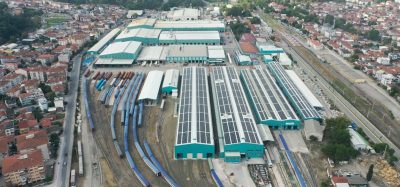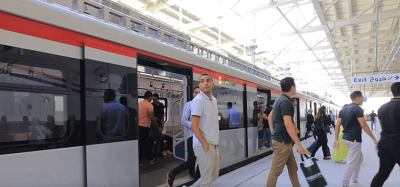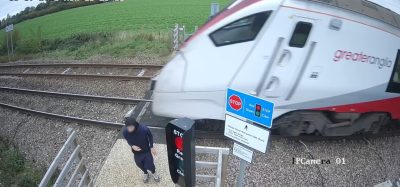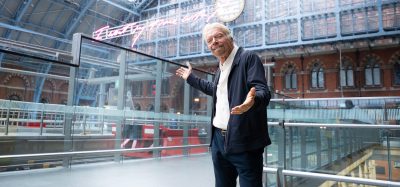Belgian high-speed: project completion in sight
Posted: 6 February 2007 | | No comments yet
Belgium, at the heart of Europe’s railway network, is a key link in what is to become a vast interoperable network of high-speed lines covering Europe. Infrabel intends to take every advantage of the opportunities this will offer. The high-speed line between Brussels and the Dutch border will be put at the disposal of the operators in April 2007; the link between Brussels and the German border is scheduled for December 2007. Global Railway Review spoke to Jean Marie Raviart, Director-General Infrastructure of Infrabel, about the final phase in the Belgian high-speed project.
Belgium, at the heart of Europe’s railway network, is a key link in what is to become a vast interoperable network of high-speed lines covering Europe. Infrabel intends to take every advantage of the opportunities this will offer. The high-speed line between Brussels and the Dutch border will be put at the disposal of the operators in April 2007; the link between Brussels and the German border is scheduled for December 2007. Global Railway Review spoke to Jean Marie Raviart, Director-General Infrastructure of Infrabel, about the final phase in the Belgian high-speed project.
Belgium, at the heart of Europe’s railway network, is a key link in what is to become a vast interoperable network of high-speed lines covering Europe. Infrabel intends to take every advantage of the opportunities this will offer. The high-speed line between Brussels and the Dutch border will be put at the disposal of the operators in April 2007; the link between Brussels and the German border is scheduled for December 2007. Global Railway Review spoke to Jean Marie Raviart, Director-General Infrastructure of Infrabel, about the final phase in the Belgian high-speed project.
By 2007, when it is fully complete, the Belgian high-speed train network will consist of some 300km of tracks, on over half of which trains will run at operating speeds of 300kph on reserved track. The remainder will consist of upgraded track on which trains will run at 160 to 200kph. Work is almost completed on the high-speed lines Antwerp to the Dutch border and Liège to the German border, the two missing links still remaining in Belgium’s high-speed network.
HSL North, Brussels to Amsterdam without a hitch
HSL North project
The existing line 25, one of the busiest lines in Belgium, has been selected as the route for the high-speed line (HSL) between Brussels and Antwerp. This choice will maximise the return on investment in modernising the line while simultaneously upgrading the domestic network. High-speed trains will eventually run right through Antwerp.
Join our free webinar: Rail cyber-security in a time of technological and regulatory transformation
Join our expert panel, including speakers from Nokia and Siemens Mobility, to explore the critical convergence of cybersecurity and 5G rail comms.
Date: 3 Dec | Time: 15:00 GMT
Can’t attend live? No worries – register to receive the recording post-event.
A 3.8km north-south junction, similar to the Brussels junction, is under construction beneath the city of Antwerp. This tunnel, on which boring was completed in 2006, is the starting point for the future high-speed line linking Antwerp to the Dutch border. The project will open up new prospects for mobility for the city of Antwerp, which will enjoy all the benefits of an ultramodern Antwerp Central station accessible from both directions and with a total of 14 tracks (on three levels) compared to the six available at present.
High-speed trains will then continue their journeys north, towards the Netherlands. The new 35.2km high-speed line first crosses the E19/A12 intersection before joining the E19 at Antwerpen-Luchtbal. It then runs along the western side of the motorway until it crosses the Dutch border towards Rotterdam and Amsterdam. Brussels-Amsterdam high-speed journey times will eventually be reduced to just 1h46.
As with all of Infrabel’s projects, respect for the environment is a primary concern in plans for the Brussels-Netherlands high-speed line. That concern is reflected in the efforts devoted to Peerdsbos, one of the region’s richest nature reserves lying just north of Antwerp. Special measures – including the construction of a tunnel – have been taken to limit the environmental impact of the new line.
Investments by Infrabel
The total investment for the high-speed line between Brussels and the Dutch border (87km) is €1.540 billion including €101 million for the upgrading of the line 25 between Brussels and Antwerp.
Infrabel has set aside €755 million for the construction of the Antwerp north-south junction, the new railway link between Antwerpen-Berchem and Antwerpen-Luchtbal.
The high-speed line between Antwerp and the Dutch border is co-financed by The Netherlands. Because the choice of route, negotiated between the two countries, dictates that more of the line runs through Belgium’s territory, The Netherlands agreed in 1996 to contribute €459.8 million (including interest) to the scheme. The HSL Antwerp to the Dutch border requires a total investment of €684 million by Infrabel.
Timing of the HSL North
Work on the Antwerp north-south junction started in May 1998 whereas the new high-speed line project took off in October 2000. Civil engineering and track work on the high-speed line was completed in early 2006. The final catenaries were in place by mid 2006.
Infrabel organised a number of high-speed trial runs on the HSL North between Antwerp and the Dutch border in the autumn of 2006 in view of testing the railway infrastructure, the ETCS signalling and security system as well as the GSM-R communication network.
The entire infrastructure will be completed and opened up to operators by 1 April 2007, in accordance with the agreements in place between Belgium and The Netherlands.
HSL East, bringing Germany closer
HSL East project
The upgrade of the existing line between Brussels and Leuven to four tracks was completed by 10 December 2006 (starting date of the new National Rail Timetable). This increase in capacity, which will also make it possible to dedicate certain tracks to certain types of service, will improve traffic speed and flow for both domestic and high-speed services. InterCity trains as well as Thalys high-speed trains will henceforth run on the two inner tracks at 160kph (and in future at 200kph) instead of the former 120kph. The two remaining tracks will be used mainly by local trains and the Regional Express Network (RER project).
Beyond Leuven and as far as Bierset, high-speed trains are already running at 300kph on a new line built parallel to the E40 motorway which eventually connects with lines in the process of modernisation in the Liège urban area. Domestic express trains also use the new line at 200kph; Infrabel is keen to promote mixed use of high-speed lines as far as possible.
Leaving Liège, high-speed trains will reach the Herve plateau by means of the 6.53km dual-track Soumagne tunnel. Built by Infrabel and completed in 2005, this rail tunnel is the longest in Belgium. After the tunnel, high-speed trains will run at normal operating speeds of 250kph on reserved track until they approach the German border. Between Aachen and Cologne (77km), high-speed trains will then take the existing modernised line on which they will be able to travel at up to 250kph.
The rolling landscape typical of this region has required Infrabel to embark on the construction of major permanent structures, such as the viaducts at José (422m in length), Herve (460m) and Battice (1,232m). The Hammerbrücke viaduct has been replaced by a new structure 285m in length. Six cut-and-cover tunnels will also be built on the new line. The longest of these (1km) will enable high-speed trains to run beneath the E40 motorway to Aachen via the modernised conventional line and further into Germany.
Investments by Infrabel
The total investment for the new high-speed line between Brussels and the German border (139km) amounts to €2.180 billion. Thereof, €670 million have been set aside by Infrabel for the upgrade to four tracks on the Brussels-Leuven line, including ?320 million for improving the domestic network and €350 million for the high-speed project. Infrabel furthermore allocates some €682 million to the Leuven-Liège stretch and finally work on the Liège to the German border represents an investment of €828 million, including the building of the Soumagne tunnel at a cost of €110 million.
The European Union, for its part, has agreed to contribute funds as part of its support to public interest projects (€215 million for high-speed train infrastructure).
Timing of the HSL East
Work on the HSL East started in March 1996 according to a phased timeframe. Infrabel is currently finalizing infrastructure work on the last construction sites between Liège and the German border. The entire infrastructure of the HSL East will be completed by the end of 2007.
Extending capacity; one of Infrabel’s strategic priorities
Both high-speed lines are part of Infrabel’s strategy to increase the capacity of its network as quickly as possible wherever necessary, for the benefit of both domestic and high-speed traffic. The strategy is being applied step by step (such as the upgrade to four tracks on the Brussels-Leuven line) with the aim of obtaining improvements without having to wait for the completion of large-scale projects as the HSL East in 2007.
Infrabel is making these investments in order to continuously enhance traffic regularity while quality and safety remain its priorities in the management and development of its network.
About the author
Jean Marie Raviart is currently the Director General of the Infrastructure and Purchasing department at Infrabel. Mr Raviart studied for a civil engineering qualification and he also has a degree in ‘operational research and industrial management’. Between 1971 and 1987, Mr. Raviart held engineering jobs at various SNCB departments including Tracks and Structural Works. In 1987 he became Chief Engineer of these departments but later moved on to become Managing Director of Electromechanics at the engineering department of TUC RAIL between 1992 and 1994. In 1995, Mr. Raviart was Managing Director of the General Services and Infrastructure department of SNCB before becoming Director General of Infrastructure in 2002. Jean Marie Raviart is also a Director and Vice-Chairman of Eurostation and Euroliège, Director of TUC RAIL and a Member of the Infrastructure Commission of the UIC.
Global Railway Review Autumn/ Winter Issue 2025
Welcome to 2025’s Autumn/ Winter issue of Global Railway Review!
The dynamism of our sector has never been more apparent, driven by technological leaps, evolving societal demands, and an urgent global imperative for sustainable solutions.
>>> Read the issue in full now! <<<







